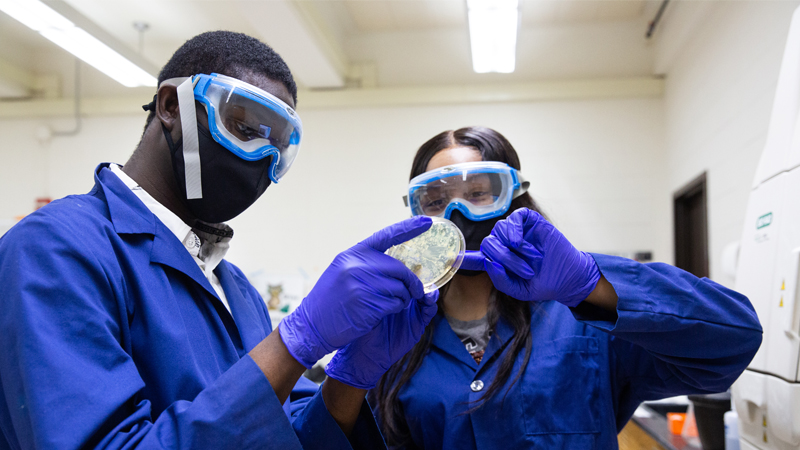RIT Alum's New Study Unlocks Better Corrosion Protection for Metals
Charles Bopp '18 and Professor KSV Santhanam’s new study reveals how graphene quantum dots can enhance corrosion protection for Monel alloy, with their findings featured in Chemical Engineering journal.

The paper entitled “Corrosion Protection of Monel Alloy Coated with Graphene Quantum Dots Starts with a Surge” has been accepted for publication in the MDPI journal Chemical Engineering.
Instruments Used
X-ray fluorescence spectrometer; a Shimadzu EDX-8100 X-ray Fluorescence spectrometer was used for the elemental analysis. Fourier infrared spectrometer (FTIR), a Shimadzu IR Prestige 21 was used for recording the spectrum. Raman spectrum was recorded using Bruker Optik Imaging spectrometer.
Publication Abstract
There has been an active interest in protecting metals and alloys using graphene coating. The mechanism by which corrosion protection occurs has not been well understood as the couple involved are both good electron conductors. In this work, we demonstrate that Monel alloy coated with graphene quantum dots (GQD) changes the corrosion rate with a surge (increase) caused by the galvanic coupling of the two materials. This surge results in the protective layer formation on Monel to inhibit the corrosion. X-ray fluorescence spectrum of Monel (400) alloy showed the composition of it as Ni (67.05%) and Cu (29.42%). The Tafel experiments carried out in NaCl and Na2SO4 electrolytes showed an initial enhancement of the corrosion rate followed by a decrease upon successive polarizations. Monel coated with graphene oxide (an insulator) shows no initial enhancement of corrosion rate; the coated samples showed a lower corrosion rate in comparison to the uncoated samples. X-ray fluorescence, Fourier Transform spectroscopy (FTIR), and Raman imaging studies have been carried out for understanding this transformation. Distinct peaks due to Ni-O stretching and Ni-O-H bending vibration were observed in the FTIR spectrum.













